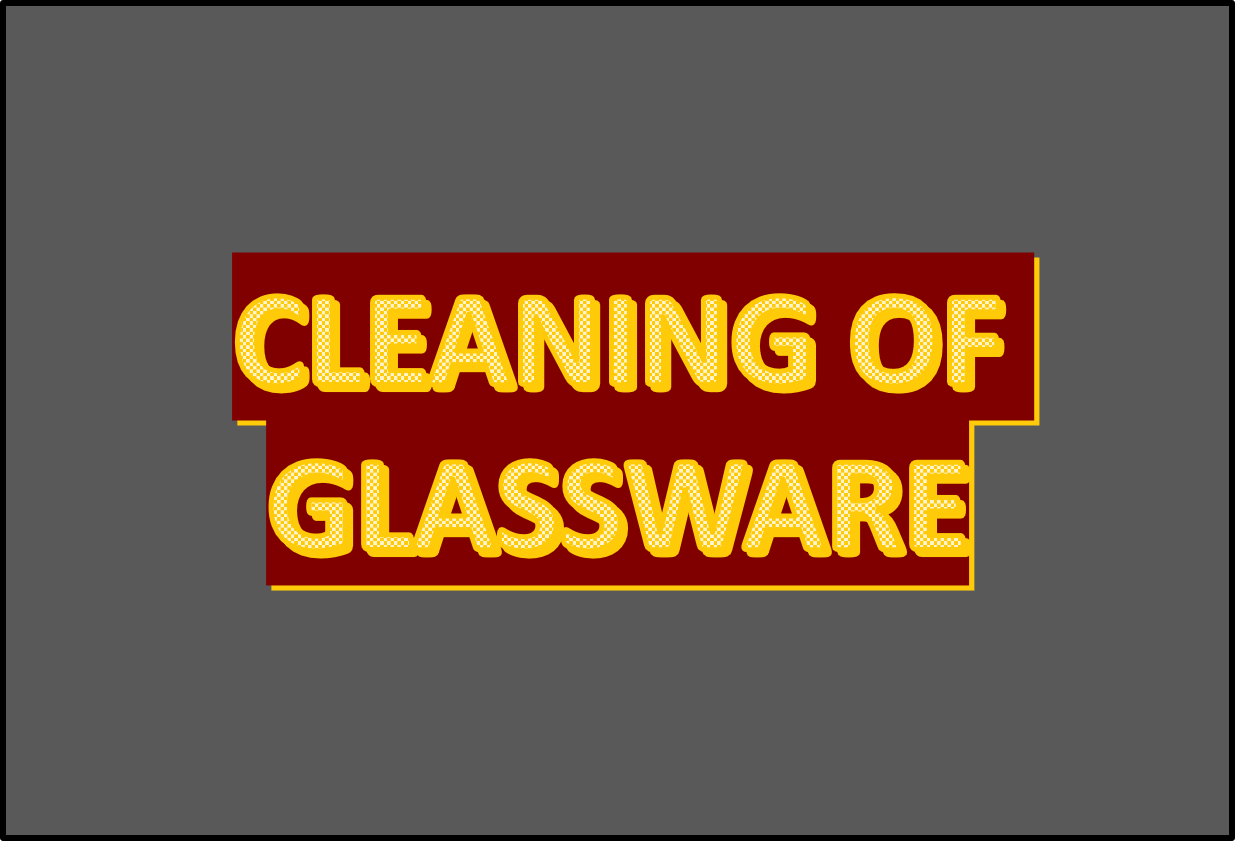SOP for Cleaning of Glassware

This article describes about the (standard operating procedure) SOP for Cleaning of Glassware in Quality control Laboratory.
I) Purpose and scope :
To provide a methodology to be followed for cleaning of Glassware used in Quality control Laboratory.
II) Responsibilities :
All Quality control personnel shall be responsible to follow and implement this SOP.
III) WASHING OF NEWLY RECEIVED GLASSWARE :
Initially glass wares shall be cleaned with potable water. After cleaning with potable water, wash the glassware with 1 % cleaning solution and then glass wares thoroughly cleaned with potable water. Finally rinse with Purified water. Dry in the hot air oven at 60°C ± 2 °C
IV). GENERAL CLEANING OF GLASSWARE:
- The solvents present in glassware shall be drained with the potable water.
- All used glass wares shall be collected in a wash tub containing 0.1% Cleaning solution.
- Laboratory assistant must wear protective gloves, goggles for cleaning of the glassware.
- Glassware shall be washed as quickly as possible after use, if delay is unavoidable the same shall be allowed to soak in water.
- Initially glassware’s shall be washed with Potable water.
- During washing of the glassware, all the glassware shall be thoroughly scrubbed with nylon brush selected for the shape and size of the glassware. Rinse glass wares thoroughly with the running tap water.
- Finally rinse the glassware with purified water.
- Grease shall be removed by weak sodium carbonate solution or acetone.
- Strong alkalis shall never be used for cleaning.
- Dry the glassware in oven at about 60°C and take out after complete drying.
- Keep the dried glassware’s at its designated place for reuse.
V). CLEANING SPECIFIC TYPES OF GLASSWARE:
1) Pipettes:
Place pipettes tips down in a tub containing 1% Cleaning solution immediately after use. Make sure that cleaning solution level is enough to immerse the pipette. Clean the pipettes under running Potable water and finally rinse with Purified water and dry in the hot air oven at 60°C.
2) Burettes :
Remove the Stopcock and wash the burette with the 1% cleaning solution Wash the stopcock separately before the stopcock is replaced in the burettes. Clean the pipettes under running Potable water and finally rinse with Purified water. Invert the burette & place it in stand for draining and drying.
3 )HPLC VIAL AND CAPS :
Remove the plug and content from HPLC vial and collect the vial and caps in glass beaker. Wash the vial and caps first with potable water then dip in to the soap solution to remove the contamination solution. Remove the traces of soap solution by washing with sufficient quantity of potable water and finally rinse with purified water. Dry in the hot air oven at 60°C.
VI) WASHING OF STAINED GLASSWARE’S WITH CHROMIC ACID:
- Chromic acid mixture should be prepared by dissolving 200 gm of sodium dichromate in about 100 ml of water, cool it in an ice bath and add slowly 1500 ml of sulphuric acid in it with stirring.
- The mixture should be prepared in a hard borosilicate glass beaker and safety glasses must be used during the addition of acid.
- Fill the glassware with chromic acid cleaning solution and. Keep for at least 30 minutes.
- Pour the chromic acid cleaning solution back into its original bottle. It can reuse repeatedly until a green color develops, indicating that the solution is spent and should no longer be used.
- Rinse the glassware thoroughly with ample quantity of tap water. Wash the glass ware with 1 % neutral soap solution and rinse glass wares thoroughly with the running tap water. Finally rinse with Purified water.
- Chromic acid should not be used for cleaning of calibrated containers used for optical measurements.
- Dry in the hot air oven at 60°C.
Note: Chromic acid is highly toxic and corrosive. Use gloves, mask and safety goggles while handling it.
VII). Frequency of Glassware Cleaning :
After completion of each product/Batch analysis and as and when required

